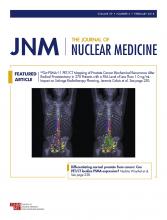TO THE EDITOR: Contrary to Siegel et al.’s commentary (1), we find little reason to believe that “dose optimization to minimize radiation risk for children … is misguided and detrimental.” Although Siegel et al. acknowledge that ionizing radiation causes DNA double-strand breaks (DSBs) at the doses used for medical imaging, they fail to fully understand the consequences of such damage. The studies of Löbrich et al. and other investigators were designed to assess whether DNA strands were reconnected after exposure to ionizing radiation (2–4). Those studies did not assess the fidelity of repair at the level of the DNA sequence. Nonhomologous end joining (NHEJ) and homologous recombination are the principal pathways for repairing DSBs (5). Although NHEJ can occur during any phase of the cell cycle, it is error-prone (5–7). In contrast, whereas homologous recombination allows error-free repair, it is restricted to the S and G2 phases of dividing cells since it uses the sequence found in the sister-chromatid as the template (5).
Multiple studies have demonstrated a linear dose–response relationship between exposure to ionizing radiation and DNA DSBs (2,4,8). Given that even replicating cells spend most of their time in G1 phase, most DSBs will likely be repaired by NHEJ. Even during S and G2, most of the DSBs that are not related to genome replication are repaired by NHEJ (7). Since NHEJ typically leads to alterations in the underlying DNA sequence, we should expect that the fraction of cells with DNA mutations will steadily increase with dose. Deviations from this linear response are possible if cells containing mutations are preferentially lost by mechanisms such as programmed cell death (apoptosis). However, the prevailing paradigm is that the DNA in cells with minimal damage is repaired (albeit with mutations as described above) whereas cell death pathways are activated when repair fails or the damage exceeds the capacity of the repair systems (9). This would suggest that mutation would be favored over cell loss at low doses and low dose rates.
We acknowledge that DNA damage also occurs from other sources, such as reactive oxygen species. However, the available data indicate that such damage is usually less severe, since it results in single-strand breaks or base damage (8,10–12). The redundancy provided by the double helical structure of DNA allows repair of such damage without alteration of the underlying DNA sequence. DSBs generated by ionizing radiation are considered particularly toxic since the ends are heterogeneous and not amenable to simple ligation (6,7,10). As outlined above, repairing such DSBs typically leads to mutations.
Consider the following: the doses of ionizing radiation used for medical imaging cause an observable increase in DSBs; the increase in observed DSBs follows a linear dose–response relationship; the primary pathway used to repair DSBs, NHEJ, leaves permanent information scars in the genome; and the relationship between cancer causation and radiation exposure is linear once doses of ionizing radiation exceed 100 mGy (10). Until molecular biology uncovers a causal chain that refutes the linear no-threshold model and those findings are supported by epidemiologic studies, we believe that it is misguided and detrimental to children not to optimize radiation exposure during medical imaging.
Footnotes
Published online Aug. 3, 2017.
- © 2018 by the Society of Nuclear Medicine and Molecular Imaging.







